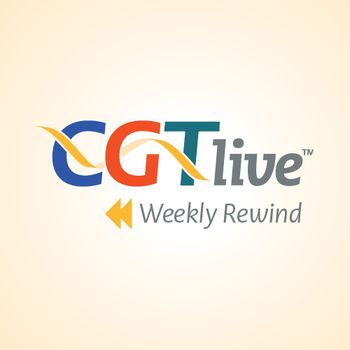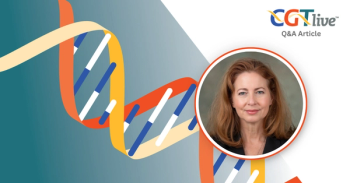
Lowering Barriers to Access for Liso-Cel Based on New Data
Manali Kamdar, MD, the associate professor of medicine–hematology and clinical director of lymphoma services at the University of Colorado, discussed the implications of a large scale analysis of liso-cel recipients.
Bristol Myers Squibb's lisocabtagene maraleucel (liso-cel, marketed as Breyanzi) is a chimeric antigen receptor (CAR) T-cell therapy that is approved for several hematologic malignancy indications in the United States. Because the therapy carries the risk of potentially serious adverse events, in particular cytokine release syndrome (CRS) and immune effector cell-associated neurotoxicity syndrome (ICANS), strict monitoring requirements are in place for patients for 4 weeks after they receive the treatment.
At
CGTLive: Can you elaborate on the rationale for this study?
Manali Kamdar, MD: CD19 CAR T-cell therapy, as everybody knows, has revolutionized outcomes in B-cell malignancies. Patients have been able to achieve durable remissions. However, irrespective of the CAR T-cell therapy construct, as a function of how it works, we have to manage unique adverse events of CD19 CAR T-cell therapy, namely CRS and ICANS. Usually, these are manageable. However, as a result of these unique adverse events, it's mandated that the treating site make patients remain within 30 miles of the academic treating center for a mandated period of 4 weeks. This obviously poses lots of logistical barriers and socioeconomic challenges as a result of which it may impair CAR-T access. Liso-cel, one of the CD19 CAR T-cell therapy products, has shown to have efficacious outcomes and durable remissions, with a very manageable safety profile. It's now FDA approved in patients with relapsed/refractory (r/r) diffuse large B-cell lymphoma (DLBCL), r/r follicular lymphoma, chronic lymphocytic leukemia (CLL), small lymphocytic lymphoma, as well as r/r mantle cell lymphoma. Given the expanded indications of liso-cel, I think it is really important to figure out: Are these mandated 4 week requirements a must? [It's also important] to figure out the timing and the management strategies of these unique adverse events of CAR T-cell therapy, and maybe based on these data, be able to personalize optimization of the postinfusion for CAR T-cell therapies and hopefully have shorter times where the patients have to remain at the academic center, and thus improve the access to care.
Can you briefly talk about the design of the study?
This was a comprehensive analysis of over 1,500 patients. The data was extracted from 5 pivotal liso-cel studies, as well as the CIBMTR registry, which would be the 1 real-world dataset, where liso-cel was explored in r/r DLBCL. The 5 pivotal clinical studies entailed patients who received liso-cel in r/r follicular, mantle cell, CLL, and r/r DLBCL. With regards to the criteria to define CRS and ICANS, it was defined based on the clinical trial criteria for liso-cel across the pivotal studies. On the other hand, with regards to the CIBMTR registry, it was based on the Lee criteria for CRS and the ASTCT criteria for ICANS.
What were the findings of the study?
A total of 1,579 patients were identified across 5 pivotal trials and the 1 real-world CIBMTR registry in r/r DLBCL. Between the 2 data sets, the characteristics were very similar across the 2 groups. However, clinical trial participants were younger and fitter compared to the CIBMTR registry criteria. However, with regards to refractory disease or the need for bridging therapy, it was equal across the 2 datasets.
So let's deep dive into the results. With regards to results, when we look at CRS, focusing only on clinical trial data 54% of patients had any grade CRS, and 98% of these events happened within the first 15 days after infusion. Only 7 patients with CRS were identified to have had occurrence of CRS after the 15 day infusion window. In the CIBMTR registry, similarly 50% of patients had any grade CRS, with 97% of patients having CRS within the first 15 days after infusion.
Now let's deep dive into the late-onset CRS. It was very rare. The ones that did have late-onset CRS, the grade was low, it was manageable, and patients did not require ICU level care.
Now let's move on to ICANS. In the clinical trial data set, 31% of patients had any grade ICANS. The majority, 88%, did have ICANS within the first 15 days after infusion, and in the CIBMTR registry data set, 27% of patients had ICANS within the first 15 days after infusion, and 97% of these had incidence of ICANS within the first 15 days after receiving infusion. With regards to focus on late onset ICANS, again, rare, manageable, and did not require ICU level care.
So overall, if you combine the 5 pivotal studies, as well as the 1 real-world CIBMTR registry data set for liso-cel across all r/r lymphomas that liso-cel currently has approval for, it is very clear that 96% of CRS as well as ICANS occurred within the first 15 days after liso-cel infusion. This really calls for some rethinking around the mandated 4 week requirement for patients to be around the treating site, and hopefully this will allow personalized tailoring of monitoring and optimizing patients' monitoring requirements after infusion of liso-cel. The idea is to improve access and be able to get patients to CAR T-cell therapy across all socioeconomic, as well as logistical barriers.
What do you feel are the next steps for clinical practice for monitoring and management of AEs for liso-cel?
I think this really calls for a concerted effort around making sure that this data is out there so that the regulatory bodies can review it and further optimize the requirement around the 4 week window and hopefully shorten it for our patients to less than at least 2 to 2.5 weeks so that we not only allow them to return home, but also make sure that the safety is not compromised.
This transcript has been edited for clarity.
REFERENCE
1. Kamdar M. Optimizing post–chimeric antigen receptor (CAR) T cell monitoring: Evidence across lisocabtagene maraleucel (liso-cel) pivotal clinical trials and real-world experience. Presented at the 2025 ASCO Annual Meeting, held May 30 to June 3, in Chicago, Illinois. Abstract #7026
Newsletter
Stay at the forefront of cutting-edge science with CGT—your direct line to expert insights, breakthrough data, and real-time coverage of the latest advancements in cell and gene therapy.


















































